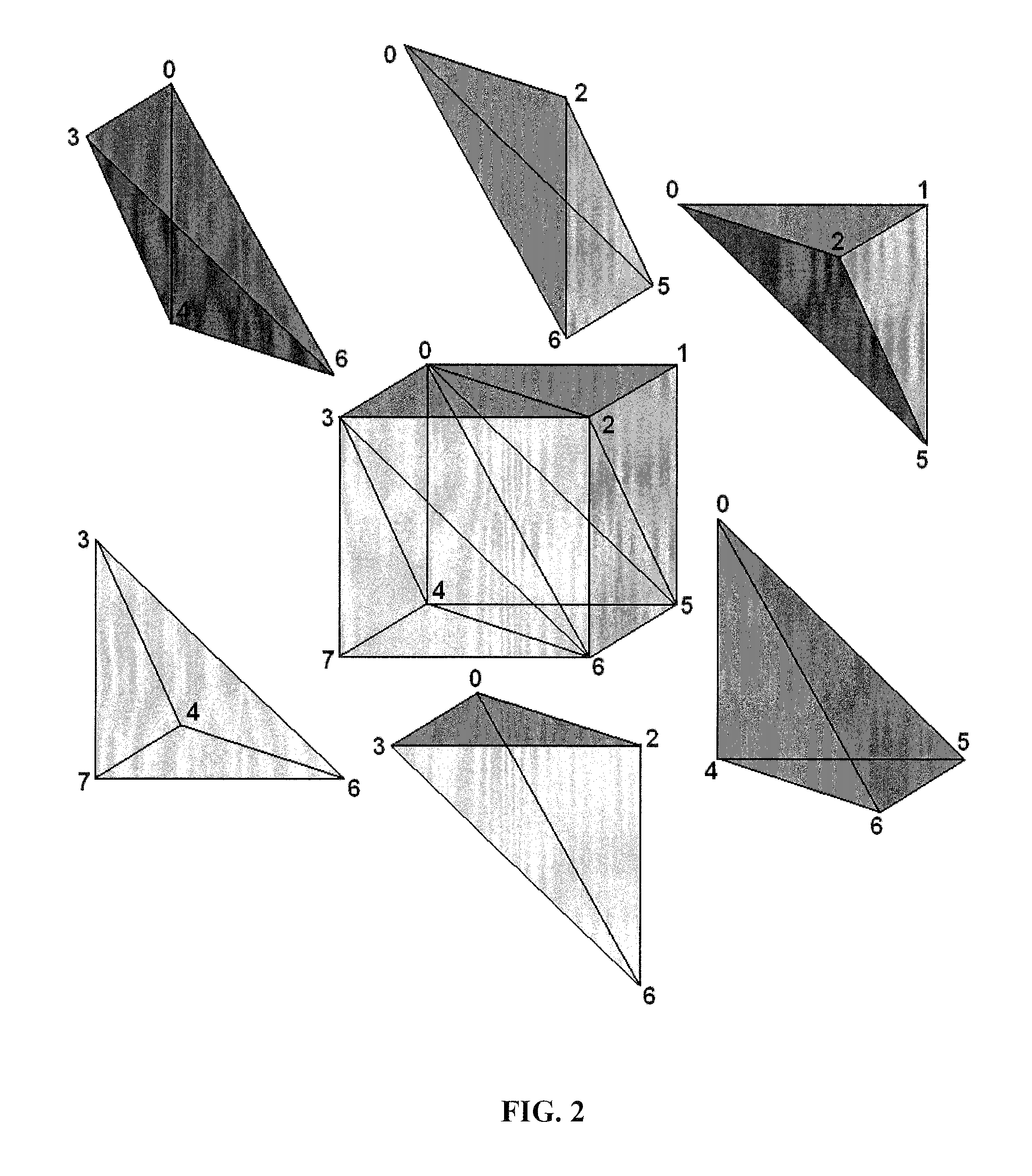Method and apparatus for pulmonary ventilation imaging using local volume changes
a pulmonary ventilation and volume change technology, applied in the field of pulmonary ventilation imaging using local volume changes, can solve the problems of not considering differences in pulmonary ventilation and perfusion, and the intrinsic spatial resolution of the detector is the major limit of the spatial resolution of the pet system
- Summary
- Abstract
- Description
- Claims
- Application Information
AI Technical Summary
Benefits of technology
Problems solved by technology
Method used
Image
Examples
Embodiment Construction
[0024]Embodiments of the subject invention relate to a method and apparatus for ventilation imaging. In a specific embodiment, a method and apparatus for use in ventilation computed tomography (CT) imaging is provided. Specific embodiments pertain to a method and apparatus for high resolution pulmonary ventilation imaging by using deformable image registration and local volume change to calculate ventilation. Since 4-D CT is less expensive than nuclear medicine, including SPECT and PET, and easier to perform, certain implementations of pulmonary ventilation imaging using nuclear medicine can be replaced by an embodiment of the subject invention using 4-D CT, unless concurrent perfusion imaging is required. Embodiments of the invention using 4-D CT can be used in radiological studies for pulmonary fibrosis, emphysema, or other indications of reduced lung function.
[0025]In lung cancer radiotherapy, 4-D CT images are often used to assess lung tumor motion. Using embodiments of the subj...
PUM
 Login to View More
Login to View More Abstract
Description
Claims
Application Information
 Login to View More
Login to View More - R&D
- Intellectual Property
- Life Sciences
- Materials
- Tech Scout
- Unparalleled Data Quality
- Higher Quality Content
- 60% Fewer Hallucinations
Browse by: Latest US Patents, China's latest patents, Technical Efficacy Thesaurus, Application Domain, Technology Topic, Popular Technical Reports.
© 2025 PatSnap. All rights reserved.Legal|Privacy policy|Modern Slavery Act Transparency Statement|Sitemap|About US| Contact US: help@patsnap.com



